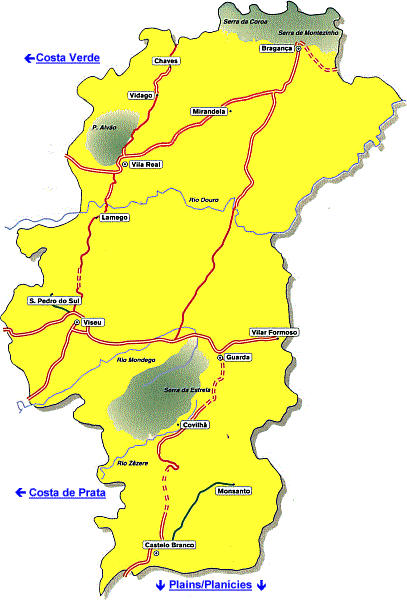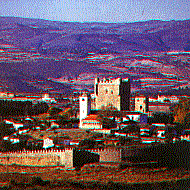|
Tourism |
| Portugal > Tourism > Mountains |
|
Accommodation | Places of interest | Regional gastronomy | Festivities | Handicrafts |
|
|
|
In the extreme north-eastern part of the country, serviced by modern roads, stone is the soul of the region: the granite of the temples and manors, the rocky mountainsides and the endurance of a people that has kept its dances and singing (with a strong Celtic influence), its festivities and processions which combined the pagan heritage with Christian rituals centuries ago. |
| Further south, one finds the green fields of the Douro, the continuation of the central mountain range (mention must be made to Serra da Estrela, highest point of continental Portugal -1992m-, a resort for practising winter sports and the place where the delicious 'queijo' -cheese- da Serra is made) and the amazing historic villages, where time seems to have stopped, such as Almeida, Sortelha, Monsanto, Belmonte, Piódão, and Idanha-a-Velha. The IP3 crosses the entire region from north to south, and the IP5, going from east to west, connects the coast with the hinterland, passing through the beautiful towns of Viseu and Guarda. |
|
|
|
An unspoilt natural paradise, with average temperatures of 14"C,/57"F (even though the summer temperatures can go as high as 26"C/78°F and in the highest regions the winter temperatures are sometimes negative), Montanhas are the ideal place for mountaineering, canoeing or resting in a thermal spa, such as Monfortinho, São Pedro do Sul, Caldas de Felqueira, Carvalhelhos, Pedras Salgadas, and Vidago, with its magnificent park, swimming pools and golf course. |
| Thanks to the predominant agriculture and grazing, the visitor Iis offered a luscious variety of delicacies (meats, sausages, cheeses and good wine), as well as the tranquillity of a people who still practises a form of communal life and for whom hospitality has long been its first instinct. |
|














